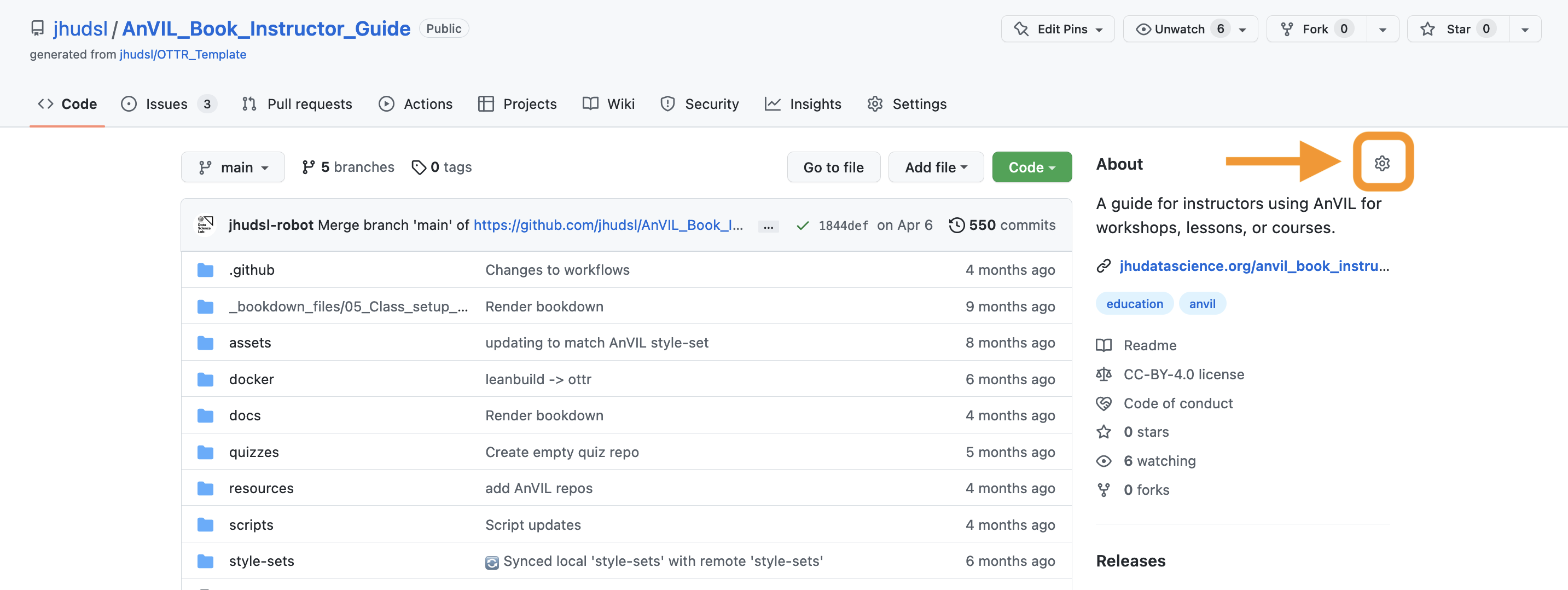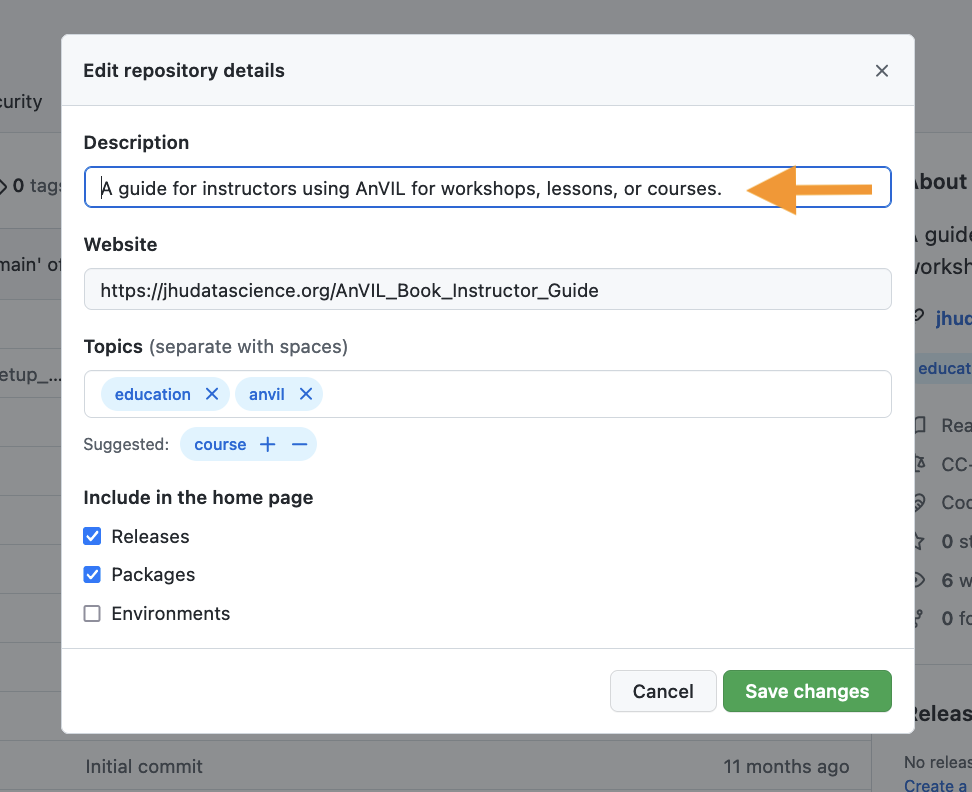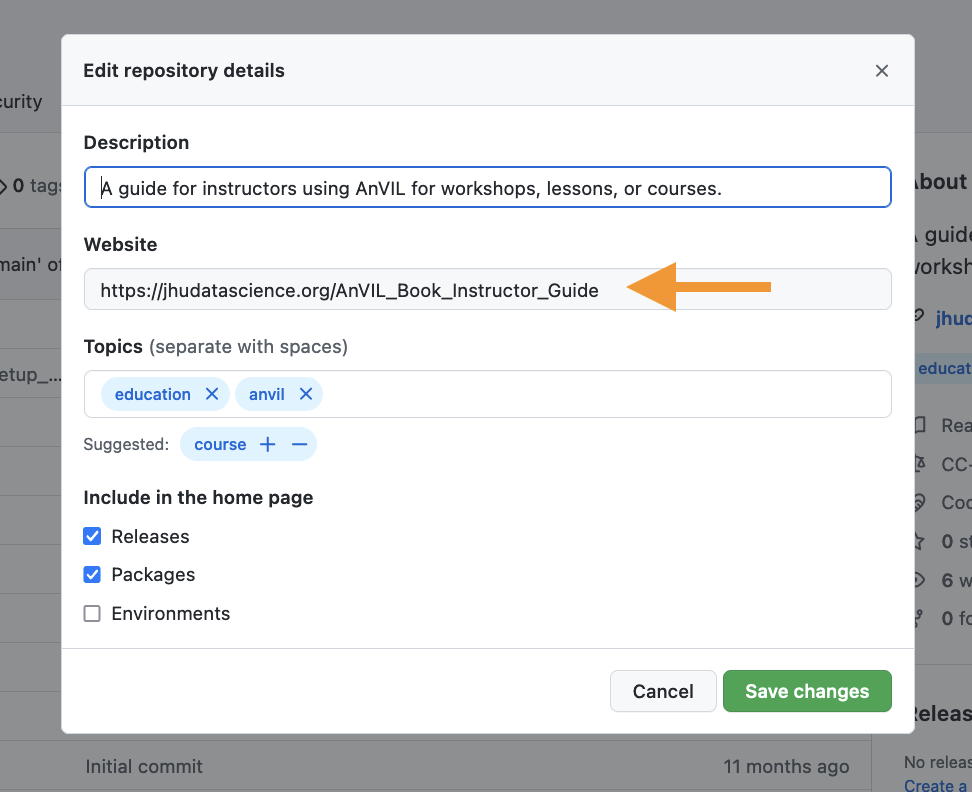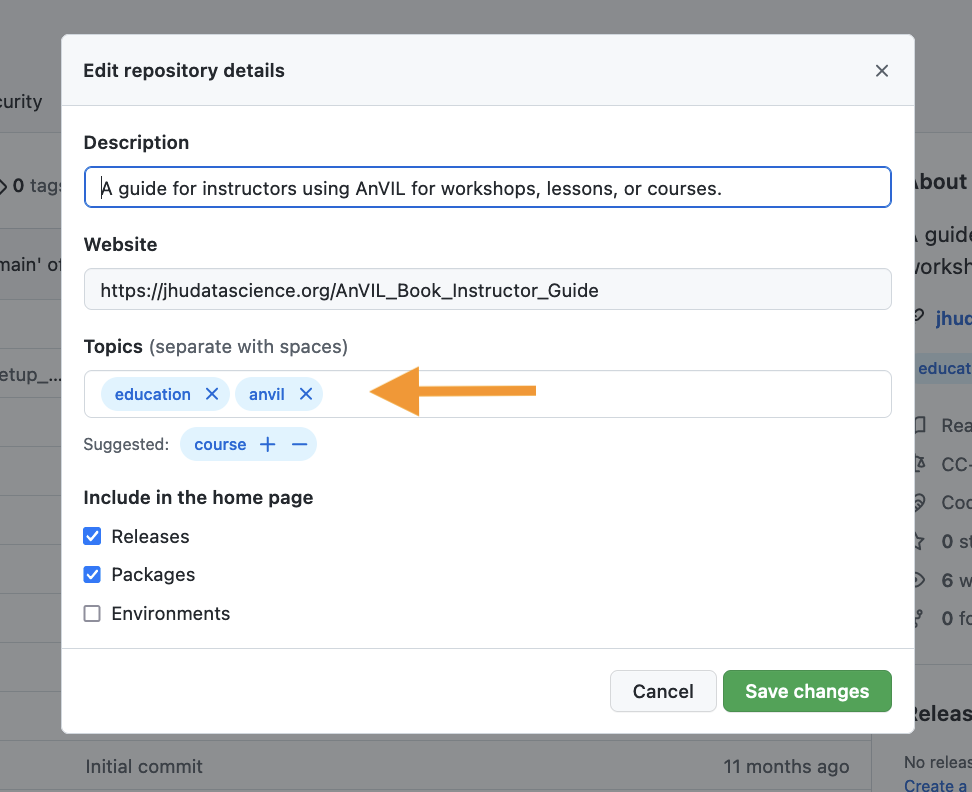
FAQ
What is the DaSL Collection?
DaSL Collection uses the GitHub API to gather repositories that we have worked on. It renders the table in a markdown-readable format.
How can I add my new course/content to the Collection?
The following are needed to list your repository in the collection:
- Your repository must be created under the
jhudslorfhdslorganizations. For repositories under other organizations, you can fork the repository into thejhudslorfhdslorganizations. Example - Your repository “code” tab must have a description, homepage, and topic tags filled out in the “About” section on the right-hand side.
- Your repository must be set to public.
- Your repository must have at least one of three tags:
course(general purpose courses),hutch-course(Fred Hutch specific courses), oredtech-software. If you feel there is another applicable category that should be listed, please reach out to Ava.
I want to use the raw Collection data!
You can use the following link:
<https://raw.githubusercontent.com/fhdsl/DaSL_Collection/main/resources/collection.tsv>
How do I edit description, homepage, and topics?
Where to edit
Start by clicking the gear button on the top right of the repository page on GitHub next to “About”.

Where is the
gear button next to the “About” menu?Edit repository description
Enter a concise description, for example “A guide for instructors using AnVIL for workshops, lessons, or courses.”

Add a description to the repository.
Edit repository homepage
Make sure you link to the website where your course is being rendered. For example, this repository links to https://jhudatascience.org/AnVIL_Book_Instructor_Guide.

Add a homepage link to the repository.

